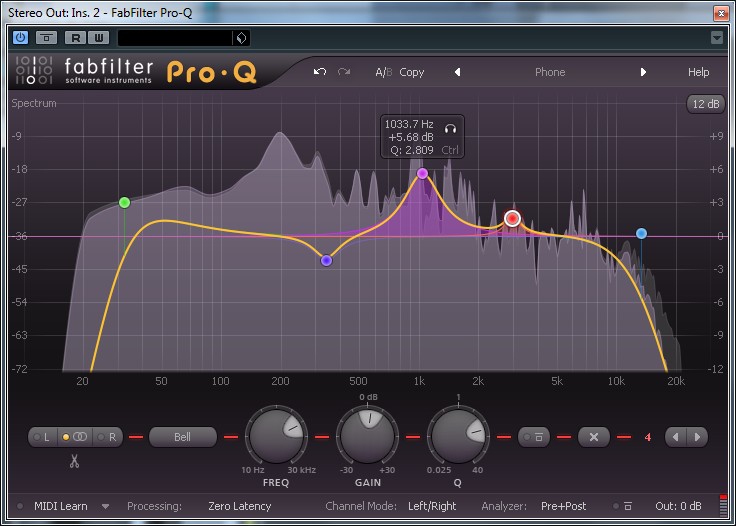
Whether or not you use zero latency mode and a linear phase mode will depend on the audio you are working on and the desired result. This ensures that no unwanted phase cancellation will take place, preserving transients and the transparency of your music. Linear-phase filters change the phase of the incoming signal in the same way for all frequencies. Linear phase modes introduce latency and will increase CPU usage, but they can help fix phase problems. The plug-in can operate in zero latency mode or in various linear phase modes (adjustable latency).

Nifty! Parameters can be fine-tuned and in text entry mode you can even put exact values for precise control. Multiple band selection allows for modifying parameters in parallel (relative) mode, and the Gain and Q knobs can be used to set identical values for all selected bands. It also includes plenty of features for advanced editing. Pro-Q is very intuitive and most tasks can be accomplished with a mouse click or two. The position of your click automatically determines the curve (bell, low & high shelf, and low & high cut with 6, 12, 24, and 48 dB slopes), a handy shortcut to creating common EQ curves which improves workflow.Īnd that’s what is probably Pro-Q’s main appeal a fantastic workflow. Just click on the yellow curve - which shows the overall frequency response of the equalizer, and drag up or down or double click in the background to create a band.

Pro-Q can have up to 24 bands with a frequency range between 5 Hz and 30 kHz and gain between -30 dB to +30 dB per band.Ĭreating and modifying equalization bands in Pro-Q’s interactive display is a breeze. FabFilter Pro-Q features a stunning graphical user interface


 0 kommentar(er)
0 kommentar(er)
